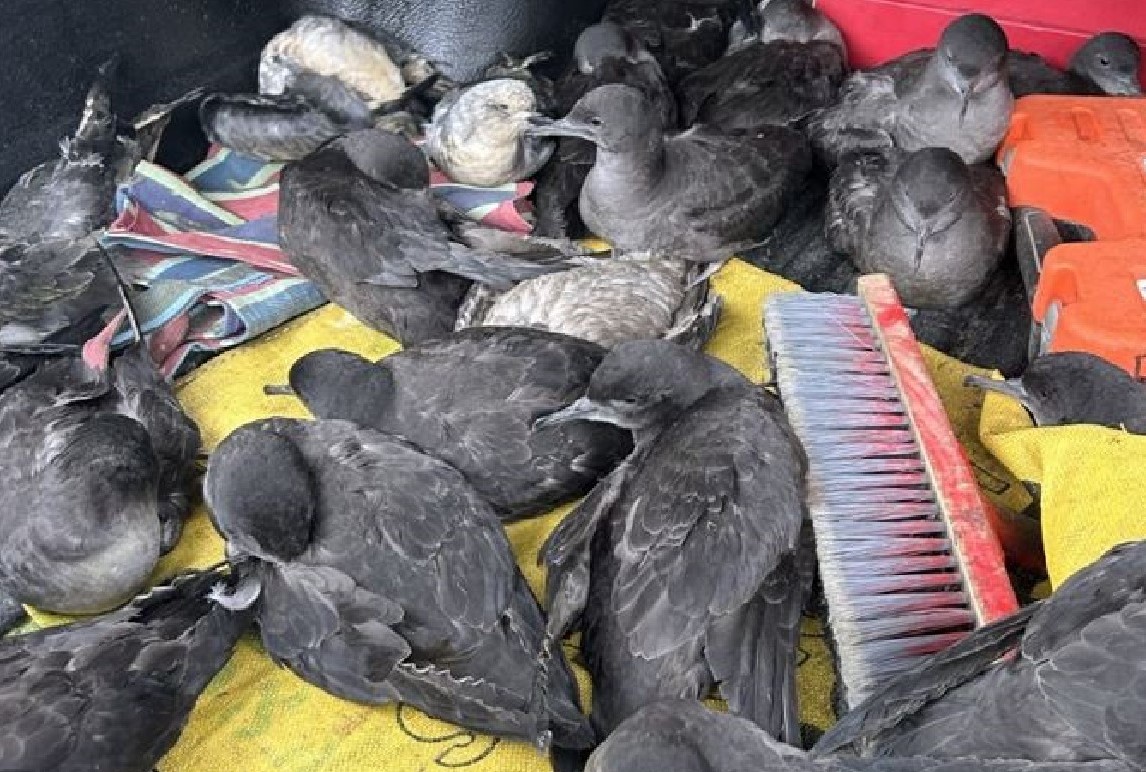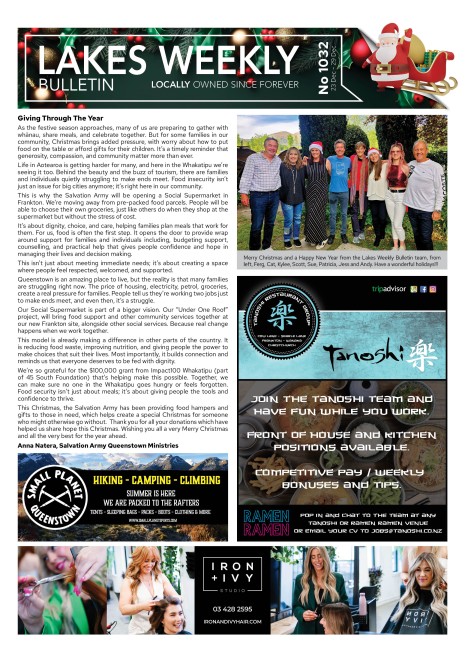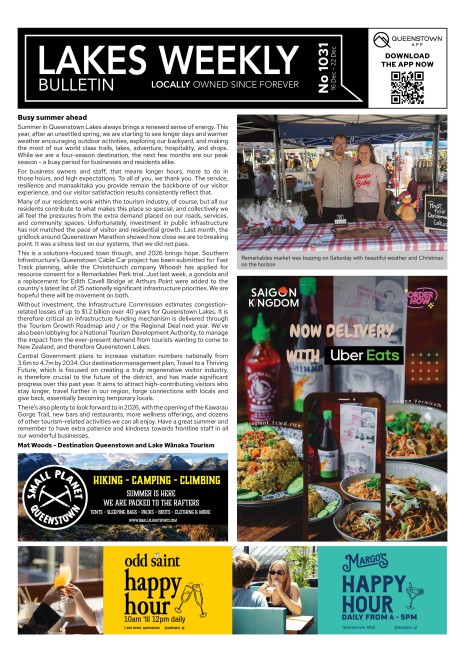Weather forces mutton birds to ground

More than one hundred tītī / muttonbirds have crash landed in Northern Southland, following the chilling southerly blast that has lashed the south in the last few days.
The phenomenon has left locals astounded and rushing to save the disorientated seabirds. It has also raised concerns about their well-being.
Athol residents Robert Durling and his wife Kylie Sutton, first heard thumping sounds on their roof during the passage of the wintery front on Wednesday night (10 May).
"I thought it might have been a possum or something," Durling said.
"Then we went out and they [muttonbirds] were on the lawn and out in front of our house and in the driveway."
At 6am next morning, Sutton, who operates SH6's popular Coffee Bomb, discovered more downed birds on the road in Garston.
Reacting swiftly, Durling rallying other locals to help gather up the displaced seabirds.
Durling used the back of his ute as a temporary bird shelter.
The Department of Conservation (DOC) was also alerted so they could collect the birds and get them back to the coast.
Durling said in the 25-years he has lived in Northern Southland, he had seen nothing like it.
More stressed birds were discovered last night (11 May), with Durling estimating he had another 30 for DOC to collect at 11am this morning.
While also spreading the word about the DOC collection on local community social media pages, Durling feared that as the seabirds had been without food for some time, some would not make it.
DOC biodiversity ranger Lance Hay said at this time of year, tītī / muttonbirds and other petrels begin their journey to the northern hemisphere.
Young birds lack the strength and experience to navigate harsh weather conditions and often end up in unexpected locations, seeking respite and recovery, he said.
"Because they are sea birds, they do have trouble taking flight again once inland."
Hay said if people came across a misplaced sea bird in their back yard, and they feel confident and comfortable doing so, they are able to transport them carefully to a beach where the necessary lift provided by the sea breeze will help them get back on their way.
Otherwise they should contact DOC on 0800 DOC HOT if they have any questions, or come across injured wildlife.
tītī, also known as Sooty shearwater or Muttonbird are native to New Zealand and are considered to be declining in numbers.
The annual harvest of around 400,000 tītī/muttonbirds is currently underway on the tītī islands around Rakiura (Stewart Island).
The season last from 1 April till 31 May and is exclusive to Rakiura Maori and their decendants.








